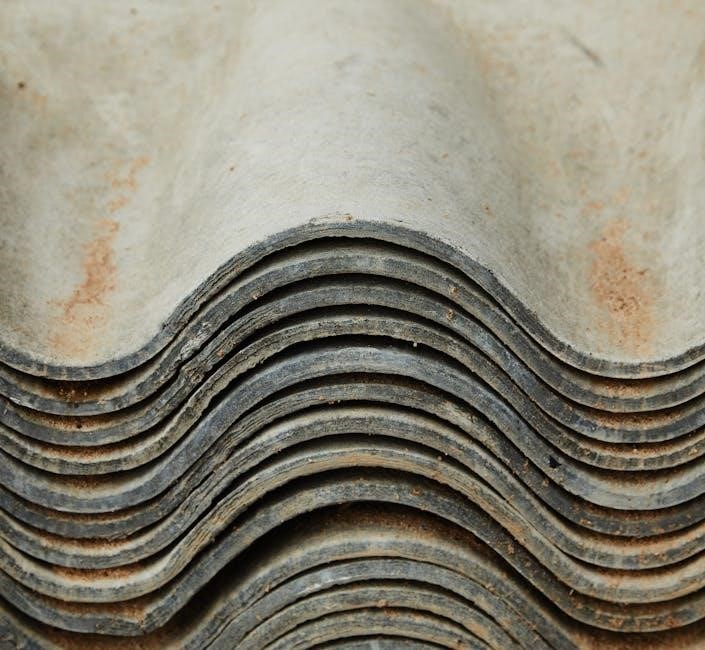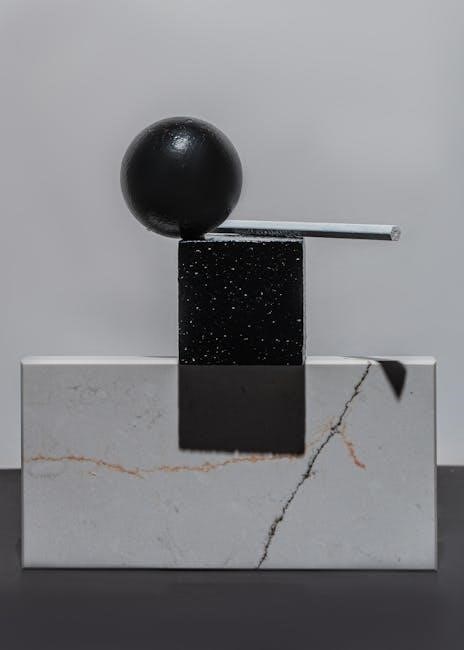
to calculate surface area of various figures‚ including prisms and pyramids‚ to determine total surface area․
Definition and Importance
The definition of surface area of composite figures refers to the total area of the surface of a three-dimensional object‚ which can be composed of various shapes such as prisms‚ pyramids‚ and spheres․ Understanding the surface area of composite figures is crucial in various fields‚ including engineering‚ architecture‚ and design․ The importance of calculating surface area lies in its application to real-world problems‚ such as determining the amount of material needed to cover a surface or the amount of paint required to paint an object․ By using worksheets and exercises‚ students can develop a deeper understanding of the concept of surface area and its importance in everyday life․ The ability to calculate surface area accurately is essential for solving problems in mathematics‚ science‚ and engineering‚ making it a fundamental concept in the study of composite figures․

Types of Composite Figures
Composite figures include prisms‚ pyramids‚ and spheres‚ which are combined to form complex shapes with various
properties
and dimensions to calculate surface area․
Prisms and Pyramids
Prisms and pyramids are common types of composite figures‚ with prisms having two identical faces and pyramids having one base and multiple triangular faces․
These shapes can be combined to form complex composite figures‚ and their surface areas can be calculated by adding the areas of each individual face․
The surface area of a prism is calculated by finding the area of the two bases and adding the area of the lateral faces‚ while the surface area of a pyramid is calculated by finding the area of the base and adding the area of the triangular faces․
Understanding the properties of prisms and pyramids is essential to calculating the surface area of composite figures‚ and worksheets can provide practice and help reinforce this understanding․
By working through problems and exercises‚ students can develop a deeper understanding of prisms and pyramids and how to calculate their surface areas․
This knowledge can then be applied to more complex composite figures․

Calculating Surface Area
Calculating surface area involves finding the area of each face and adding them together using
formulas
and techniques․
Lateral Area of Prisms and Pyramids
The lateral area of prisms and pyramids is a crucial concept in calculating the surface area of composite figures․ To find the lateral area‚ we need to calculate the area of the sides‚ excluding the base and top․ For prisms‚ the lateral area can be found by multiplying the perimeter of the base by the height․ In the case of pyramids‚ the lateral area is the sum of the areas of the triangular faces․ Using the formula for the lateral area‚ we can calculate the surface area of composite figures by adding the lateral area to the areas of the base and top․ This concept is essential in solving problems related to surface area of composite figures‚ and worksheets provide ample practice to master this skill‚ making it easier to solve complex problems with ease and accuracy‚ using formulas and techniques․

Surface Area of Composite Solids
Calculating surface area of composite solids involves adding areas of individual shapes‚ using
formulas
to find total surface area of complex figures accurately․
Example Problems
To understand the concept of surface area of composite figures‚ it is essential to practice with example problems‚ using worksheets with answers to guide the learning process‚ and calculate the surface area of various composite shapes‚ such as prisms and pyramids‚ by breaking down the shapes into their individual components and finding the surface area of each part‚ then adding them together to find the total surface area‚ and checking the answers with the provided solutions to ensure understanding and accuracy‚ and using online resources‚ such as worksheets with answers in pdf format‚ to access a wide range of example problems and practice exercises‚ and to develop problem-solving skills and build confidence in calculating the surface area of complex composite figures‚ and applying the concepts to real-world problems‚ and using the worksheets to identify areas of difficulty and focus on improving those skills․
Worksheets and Exercises
Worksheets and exercises provide practice calculating surface area of composite figures using
resources and online tools effectively․
Practice Problems
Practice problems are an essential part of learning about surface area of composite figures‚ allowing students to apply their knowledge and skills to real-world scenarios․
Using worksheets and exercises‚ students can practice calculating the surface area of various composite figures‚ including prisms and pyramids․
The practice problems can be found in pdf resources and online tools‚ providing a comprehensive and convenient way to learn and practice․
These resources often include answers and explanations‚ helping students to understand and learn from their mistakes․
By working through practice problems‚ students can develop a deeper understanding of the concepts and formulas involved in calculating surface area․
This will help them to become more confident and proficient in their ability to calculate surface area‚ and to apply this knowledge to a wide range of problems and scenarios․
The practice problems can be used in a variety of settings‚ including classrooms and homeschooling environments;

Real-World Applications
Real-world applications include architecture and engineering‚ using math to design and build composite structures‚ calculating surface area for construction and design purposes effectively․
Engineering and Architecture
Engineering and architecture fields heavily rely on understanding surface area of composite figures to design and build structures‚ taking into account the materials and costs involved in construction․
The calculation of surface area is crucial in determining the amount of materials needed‚ such as concrete‚ steel‚ and glass‚ to construct a building or a bridge․
Using mathematical models and software‚ engineers and architects can simulate and analyze the behavior of composite structures under different loads and conditions‚ ensuring safety and efficiency․
The application of surface area concepts in engineering and architecture enables the creation of innovative and sustainable designs‚ such as green buildings and energy-efficient systems․
By mastering the calculation of surface area‚ professionals in these fields can optimize their designs‚ reduce costs‚ and improve the overall performance of composite structures‚ ultimately benefiting society and the environment․
Effective use of surface area calculations can lead to significant improvements in various engineering and architectural applications․
A summary of the surface area of composite figures worksheet with answers pdf is essential for understanding the concept․ The internet provides various resources‚ including worksheets and online calculators‚ to help students learn․ Using these resources‚ students can practice calculating the surface area of different composite figures‚ such as prisms and pyramids․ The worksheets typically include exercises with answers‚ allowing students to check their work and identify areas for improvement․ By mastering the concept of surface area‚ students can apply it to real-world problems‚ such as designing buildings or packaging products․ Effective use of online resources and worksheets can help students develop a strong foundation in math and improve their problem-solving skills․ With consistent practice‚ students can become proficient in calculating the surface area of composite figures and apply this knowledge to various situations․ This skill is essential in various fields‚ including engineering and architecture․